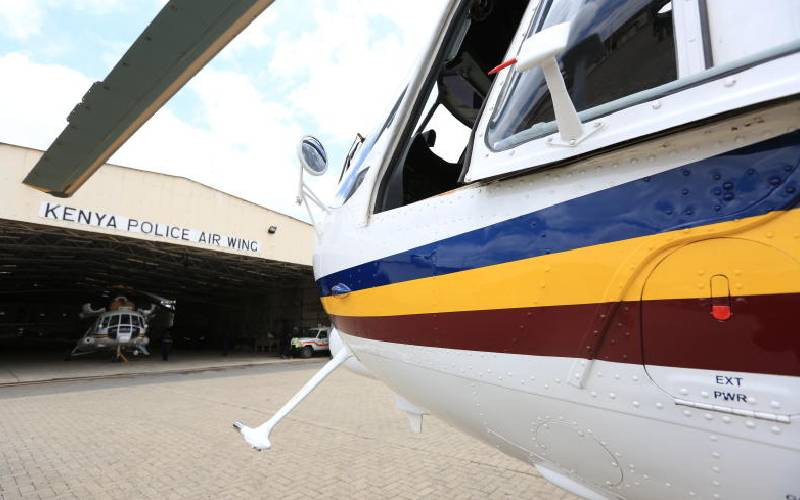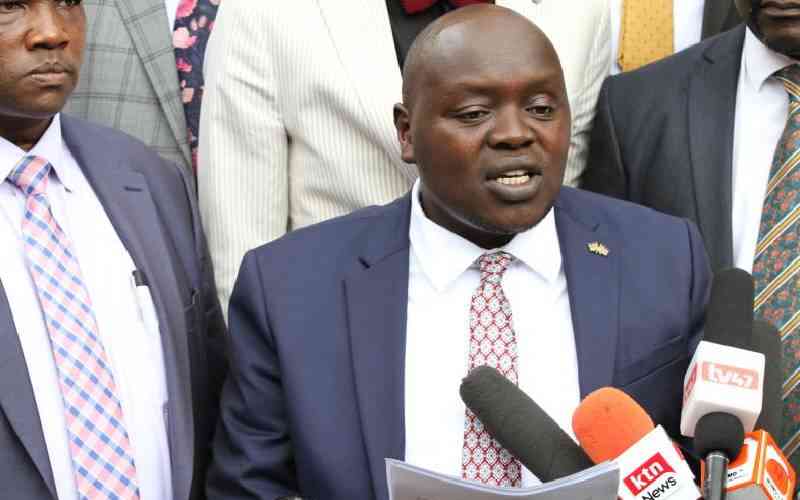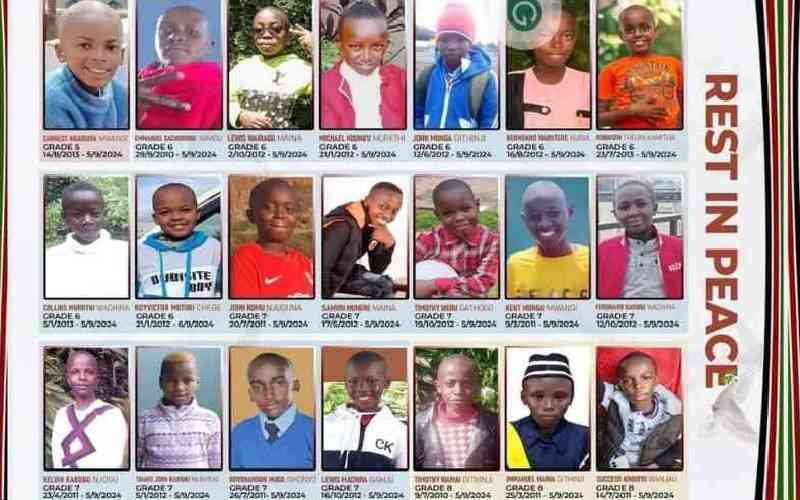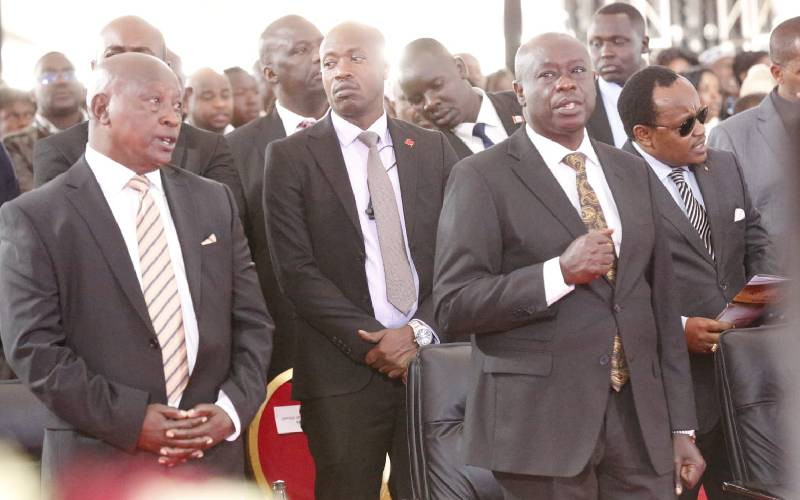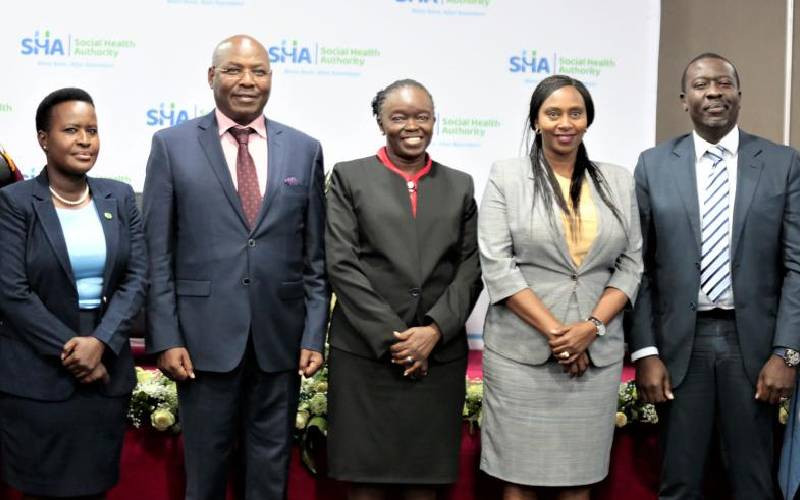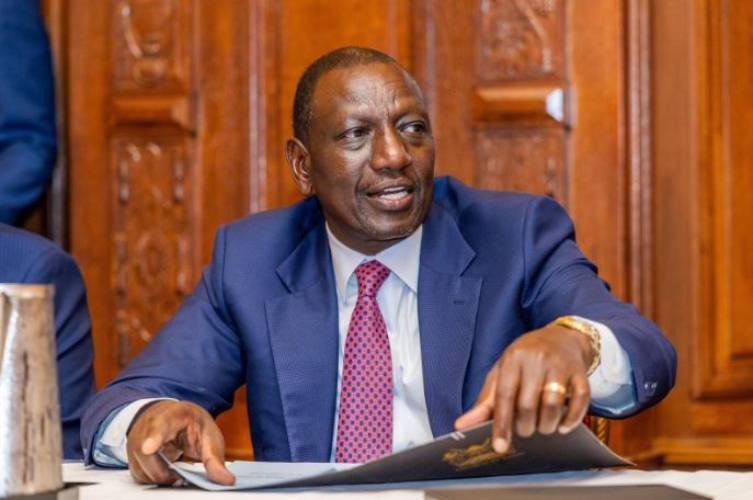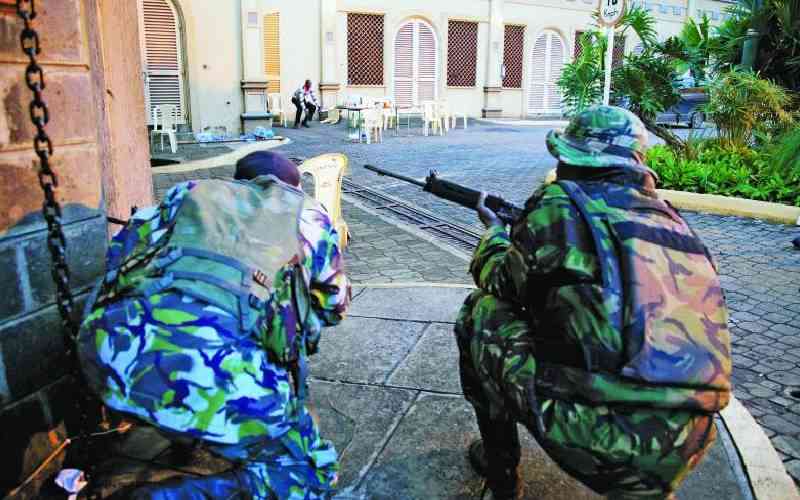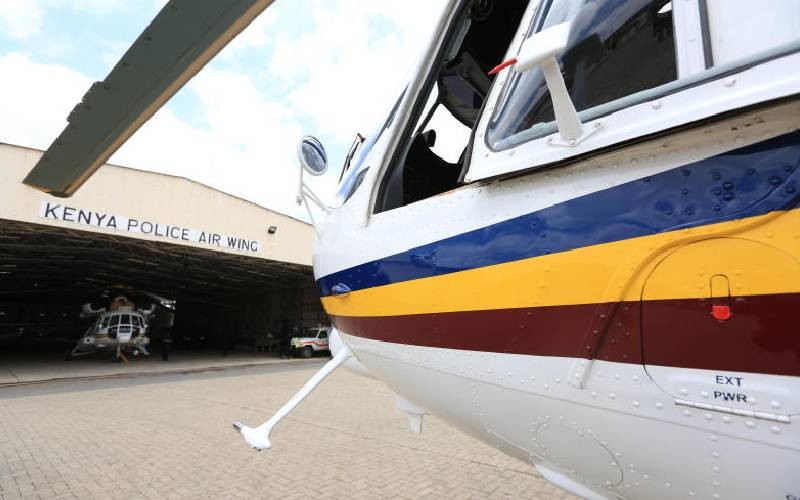
In what appears to be an emerging tension between the National Police Service (NPS) and the Kenya Defence Forces (KDF), the police are now pushing for the return of their Airwing, currently under the control of the military.
The Maraga Taskforce report on police reforms now questions the validity of the 2019 presidential directive by then President Uhuru Kenyatta that transferred the Police Airwing to the National Air Support Department (NASD), a military-led unit.
As it stands today, in case of a mission that requires an aircraft, the police must get clearance from the military to fly out, and this, the report says, continues to occasion unnecessary tension between the security teams and compromise national security.
The 2019 transfer was intended to enhance efficiency in managing national air assets, according to government.
However, the decision has been faulted by police leadership, who argue that the transfer has hampered their operational autonomy, compromised efficiency and severely restricted their access to crucial aerial resources.
“This was an operational blunder. Police need autonomy, and shifting control to the military definitely comes with far-reaching implications,” explained Chris Otieno, a Nairobi-based security consultant.
The Maraga Taskforce, established to review police reforms, has faulted the 2019 directive, recommending a return of the Police Airwing to NPS.
The Taskforce notes that while the idea of pooling national assets like aircraft for coordinated use is commendable, the execution of the strategy had created operational inefficiencies that undermine the police’s mandate.
“This has hampered NPS’s operations and affected its capacity in flight operations,” the report observes.
But Githae Mwaniki, an aviation safety expert, says reverting the Airwing to police control should be done gradually to ensure a smooth transition.
“In aviation, an operational code is crucial, guiding day-to-day activities, from technical matters to staff management. The Police Airwing has been lacking such a framework, and before it reverts to police control, they must establish these standards,” explained Mwaniki.
Established in 1949, the Police Airwing has been a crucial component of police operations, playing a pivotal role in reconnaissance, search and rescue, anti-poaching efforts and VIP transport.
The transfer of control to NASD led to a series of challenges for the police. The Taskforce noted how NPS now has to seek NASD’s authorization to use its own aircraft, a bureaucratic process that has hindered its ability to respond swiftly to emergencies.
The Standard reached out to NPS Spokesperson Resila Onyango for comment on how this had affected operations but did not get a response.
The report highlights concerns raised, which justified the 2019 transfer by citing a history of mismanagement and technical failures in the Police Airwing.
In April 2015, when gunmen attacked Garissa University killing 148 students, the misuse of police choppers came to light.
It was established that a plane meant to transport officers to the scene was instead used to fly the family of a senior police officer to a holiday at the Coast.
Ndanu Munene Mbithi, understood to be the daughter-in-law of the then Police Airwing Commandant Rogers Mbithi, posed for a photo by the Cessna 208B aircraft while on the holiday, that eventually flew the officers to Garissa.
When pressed for answers, Mbithi said the plane had been dispatched to the coast on a training mission but that on return, it had stopped to pick up his kin from a resort in Mombasa.
“There is nothing to hide. It came back with (my daughter-in-law) and two small children. I took full responsibility and explained that,” he was quoted as saying.
Such glaring failures by the police and the loss of several aircraft in crashes and the inability of the police to maintain others in airworthy condition, analysts believe, could have informed the decision to place them under the control of KDF.
In its submission to the Taskforce, KDF pointed to poor management and inadequate technical expertise within the NPS, suggesting that the transfer to NASD was necessary to prevent further losses and maintain national aviation standards.
However, police leadership rejects these claims, arguing that the failures were exaggerated and could have been addressed through internal reforms rather than transferring control to another agency.
They argue that NASD has not only failed to improve the maintenance and serviceability of police aircraft but has also sidelined police pilots, many of whom have been rendered redundant since the transfer.
“There are obvious past failures that need to be addressed. However, in most security operations, the success is sometimes informed by how fast you respond. We know that the police are closer to the people than anyone else and so you don’t want to hamper that response,” said Otieno.
The Maraga Taskforce’s report paints a bleak picture of the Police Airing’s status since the transfer.
From 2010 to 2022, a number of aircraft have become unserviceable, with several crashes reported. For instance, a Cessna 208 crashed in 2012, while an AgustaWestland AW139 went down in 2020.
The report details a sharp decline in the airworthiness of the remaining fleet, further hampering the NPS’s aerial capabilities.
A key issue raised by the Taskforce is the lack of clarity regarding NASD’s adherence to the Kenya Civil Aviation Authority (KCAA) regulations.
“Safety is everything and definitely needs to be given prominence,” says Mwaniki.
While the NPS Airwing was previously required to operate under KCAA standards, it remains unclear whether NASD, staffed partly by KDF officers, is held to the same rigorous safety and airworthiness standards. This ambiguity has raised concerns about the safety and oversight of police aircraft under military control.
The report further reveals the operational difficulties faced by the police under NASD’s control. According to the Taskforce, police officers have experienced delays in air rescue operations due to the cumbersome process of obtaining clearance from NASD. In some cases, officers injured in the line of duty have had to wait for hours before receiving aerial evacuation.
“Even after the Airwing is restored to police control, there must be regular audits to ensure continuous compliance with aviation standards,” Mwaniki said.
 The Standard Group Plc is a multi-media organization with investments in media platforms spanning newspaper print
operations, television, radio broadcasting, digital and online services. The Standard Group is recognized as a
leading multi-media house in Kenya with a key influence in matters of national and international interest.
The Standard Group Plc is a multi-media organization with investments in media platforms spanning newspaper print
operations, television, radio broadcasting, digital and online services. The Standard Group is recognized as a
leading multi-media house in Kenya with a key influence in matters of national and international interest.

